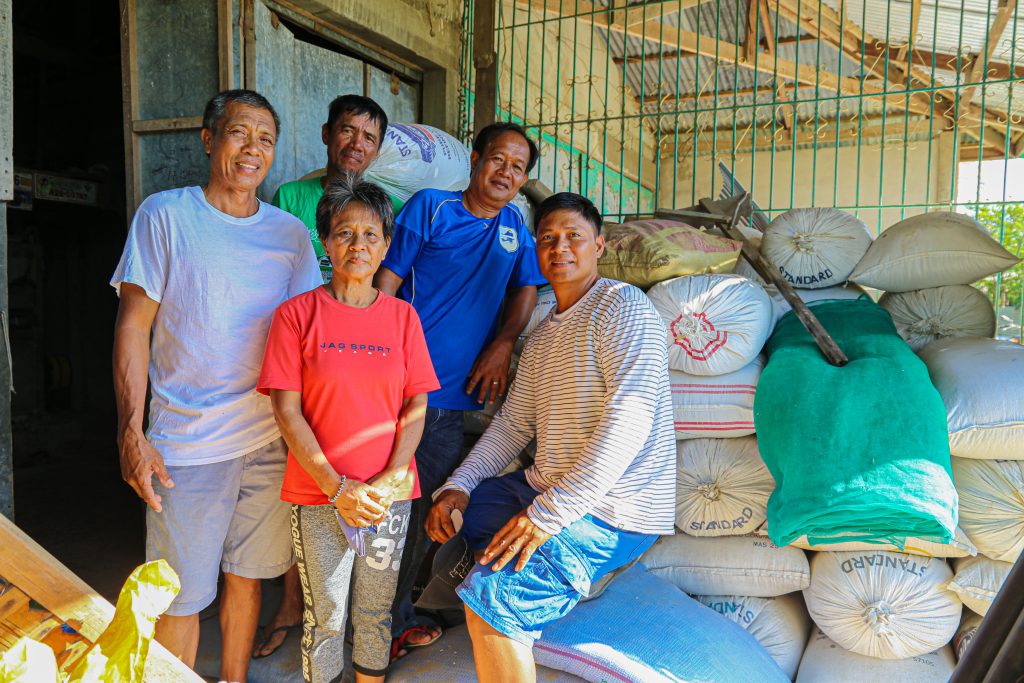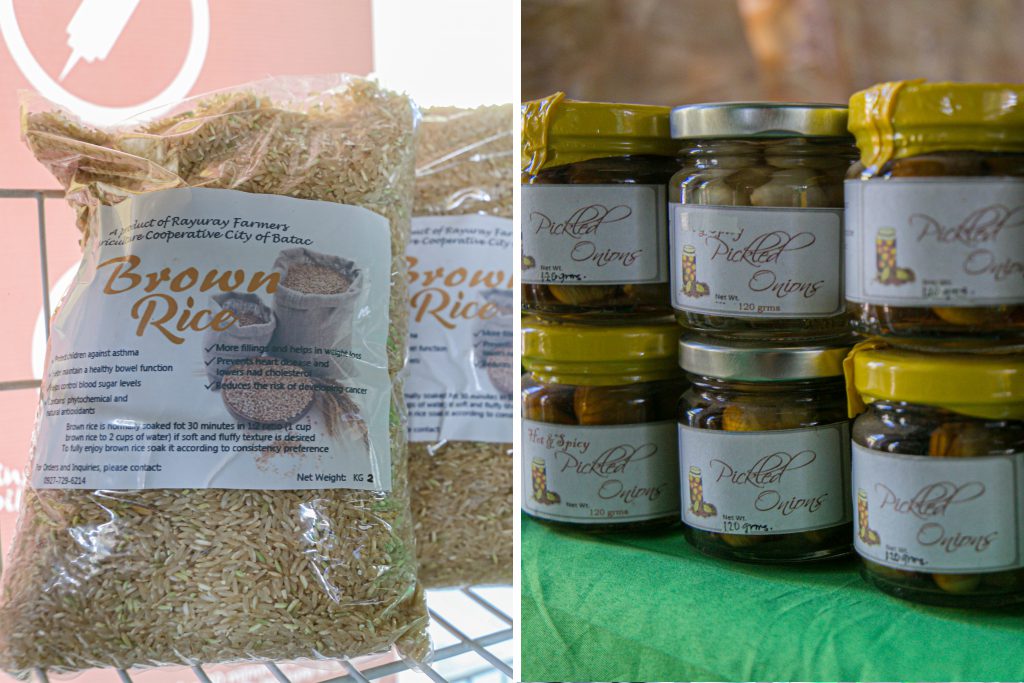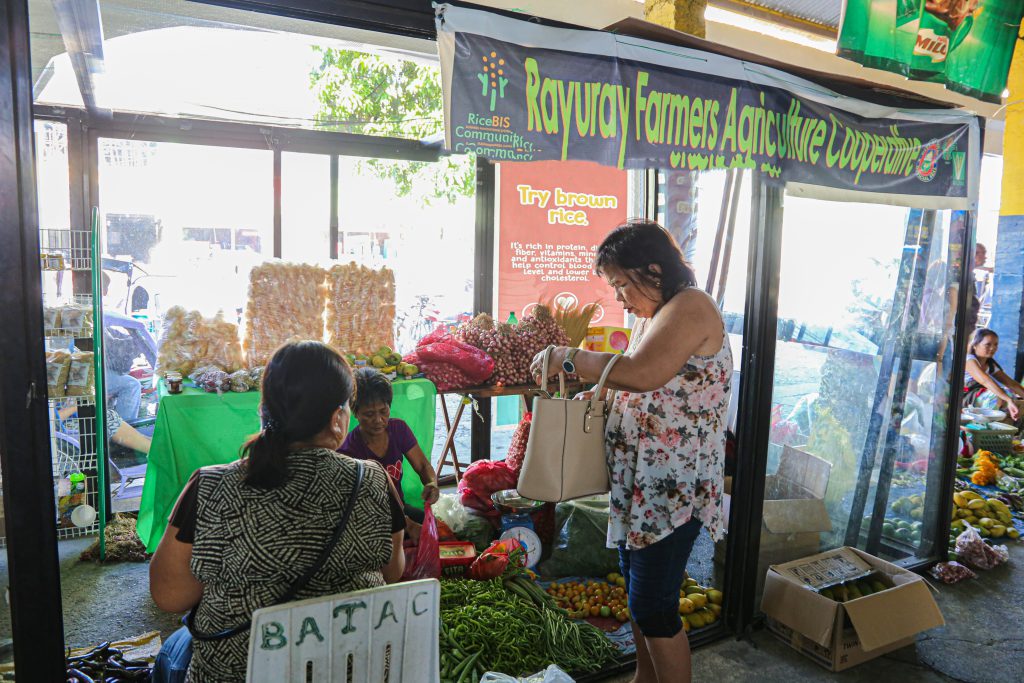
More restaurants, malls, grocery stores, hotels, and other institutional buyers are finding it handy to source out rice and other food items from local farmer groups. Aside from the patriotic pressure of buying local, there is wisdom in doing so because structurally, these farmer groups have the potential of providing both the quality and quantity demanded.
This budding story of the Rayuray Farmers Agriculture Cooperative (RFAC) in Batac City, Ilocos Norte, while still far from its climax, shows the first steps to realizing such potential. RFAC, composed of 59 members, has been a part of the PhilRice-led multi-agency program called Rice Business Innovations System Community (RiceBIS) since 2017. RiceBIS aims to organize rice farmers and link them to the market.
In 2017, their members were trained on yield-increasing and cost-reducing rice production strategies and in September last year, RFAC finally registered as a cooperative. They are currently marketing four products: dried palay, milled rice, brown rice, and onion pickles. In dry season 2019, they managed to sell 5,800kg of dried palay to NFA at P21/kg. They also applied and got qualified to become an accredited NFA supplier. Their linkage with NFA also helped the group to avail of a rotovator grant from DA-RFO 1.
Except for dried palay, their products attract the spotlight through trade fairs, community retails, and a public market kiosk, which opened in April this year. One of the major exposures they had is the monthly Producers to Consumers (P2C) trade fair and exhibit in Quezon Memorial Circle, Quezon City. Through this, they are starting to gain momentum and recognition from the locals. While they have yet to reach the apex of being an organized group, RFAC certainly has promising initial linkages and market exposures to bank on.
Expediting quality production

Since farmers are organized by leaders/ facilitators, they are motivated to produce quality products; otherwise, their group’s reputation will be smeared. Structurally, it is also more convenient for bulk buyers to deal with a handful of people like farmer group facilitators and agree with them on quality standards. Those quality demands and expectations can then be relayed by the facilitators to the members before planting.
The same is true with RFAC. The group’s manager Guillermo “Guilly” Quemquem told us that one lesson they learned from marketing to NFA is the importance of influencing their members in terms of production practices, especially on the rice variety planted. He said that if majority of their members would plant the same and good-quality variety, they could get better market prices. That is why Guilly entreats the group to be united in that matter.
Meeting the quantity demanded

Combining this discipline to produce good-quality products with a multitude of members would complete the recipe of increasing farmers’ income and improving agricultural standards in the country. As a young group, RFAC is still grappling to master the quantity aspect of marketing.
Wet season in 2018, RFAC managed to sell almost 30 tons of palay to different traders, though not through the more economic one-time consolidated buying and selling mode owing to small monetary capital. What they did instead was to buy and sell 2-60 bags of palay daily for almost a month, depending on the available rolling capital and palay supply.
With more operations in their growing enterprises, the group shifted to a consolidated mode of palay trading to NFA this dry season. Through this, they cornered a higher and more stable price, Guilly confirmed. However, financial capital still took its toll on them. RFAC chairperson Ruthbell Pammit told us that they could have sold more palay to NFA if they had bigger capital. Even though the members managed to produce 40 tons of palay, the coop could only afford to buy more or less 10 tons from them, four tons of which were for the brown rice enterprise. But when given better access to opportunities like capital and more members joining, local groups like RFAC could earn a heftier income because of economies of scale – the more units sold, the lower the cost of production, hence, the bigger the net income.
Hurdling both quantity and quality
Organized farmers’ potentials in providing both quality and quantity are well-discussed in books and other scholarly publications. These principles have also transcended to success stories of some cooperatives in the Philippines, but they tend to be sparse.
As starters, RFAC members know that they will still walk a long way with their linkages and government partners in preparing the social infrastructure they need. Local business owners can also help see more groups like RFAC transform into more progressive and dependable suppliers.
For instance, local grocery stores, restaurants, canteens, among others, can partner with coops or farmers’ groups in their locality and fairly deal with them as suppliers. With regular demand from bulk buyers, these local groups will have better chances of flourishing and surviving the initial hurdles like the ones facing RFAC. So the next time people affiliated to such institutions conceptualize their corporate social responsibility thrusts, for example, they might consider working with these groups knowing its prospective impacts.
When the market has become more viable for the existence of sustainable local groups, soon, buyers might not have to choose anymore between quality and quantity as both can already be carried by local farmer groups.
This story was published on PhilRice Magazine April – June Issue. Read:
https://www.philrice.gov.ph/e-magazine/




